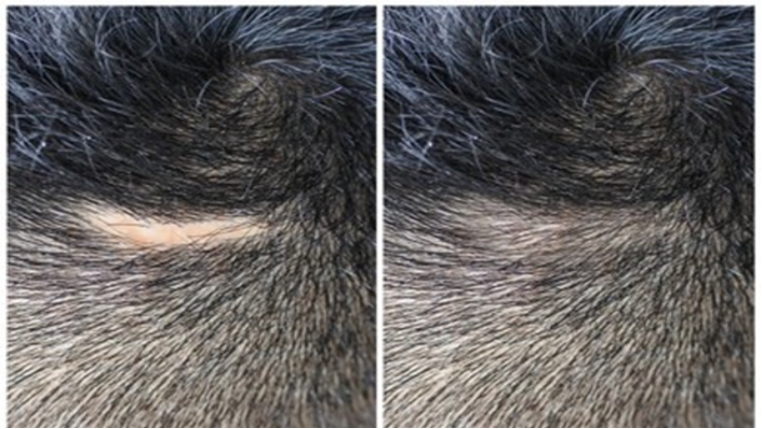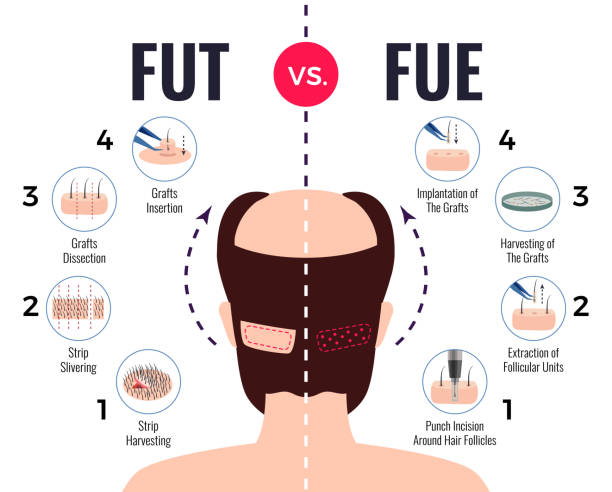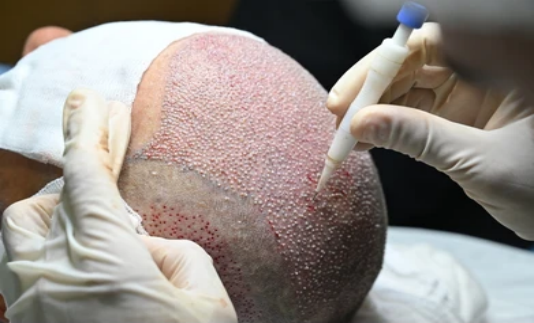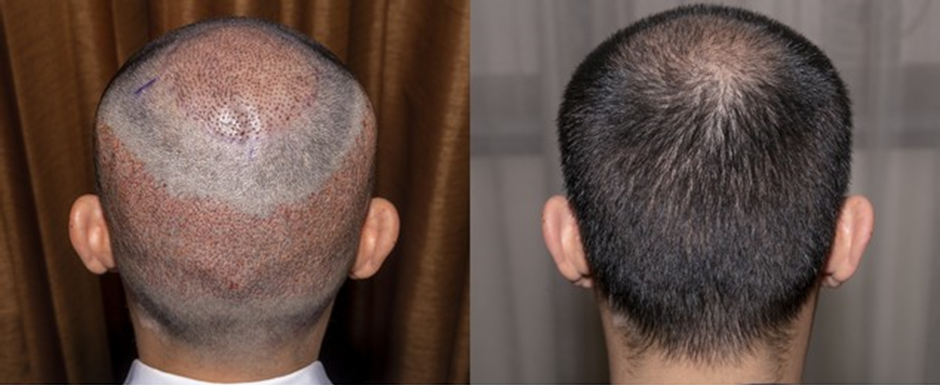Are you worried about the appearance of your FUT scar after 1 year? Many patients share this concern and wonder if the scar will fade or remain noticeable.
Dr. Viral Desai, a highly Hair transplant surgeon in Mumbai, states,
“Proper care and advanced techniques can significantly reduce the visibility of FUT scars, enhancing overall patient satisfaction.”
With over 20 years of expertise in hair transplantation, Dr. Desai uses cutting-edge methods to ensure minimal scarring and optimal, natural-looking results. His commitment to excellence and patient care has earned him recognition as a provider of the best hair transplant in Mumbai.
Now, let’s explore the stages of FUT scar healing over a year.
FUT Scar 1 Year Timeline
Understanding the FUT scar healing timeline can help set realistic expectations:
- Initial Healing (0-2 Weeks):Right after surgery, your scar may appear red and raised. This is normal and part of the healing process.
- Scar Formation (1-3 Months):The scar gradually fades and becomes more defined. It’s crucial to follow your doctor’s aftercare instructions during this period. Regular follow-ups are essential to monitor progress.
- Scar Maturation (3-6 Months):The scar begins to flatten and lose its redness. It becomes less visible as it continues to heal.
- Final Appearance (6-12 Months):By now, the scar’s appearance should be significantly improved. Proper care throughout this time ensures the best possible outcome.
Quick Fact: Younger patients tend to heal better and have less visible scars than older patients.
What Does a FUT Scar Look Like After 1 Year?
A FUT scar after 1 year typically appears as a thin, linear scar. The visibility of the scar can vary based on several factors. These include the patient’s skin type, healing process, and adherence to post-operative care. Initially, it may appear as a red or pink line. However, over time, it fades to match your natural skin tone. Most patients find the scar less noticeable over time and blend in with the natural hairline.
The surgeon’s technique can also influence the scar’s final appearance. Dr. Viral Desai, an esteemed hair transplant surgeon in Mumbai, uses precise suturing methods to ensure minimal scarring. Additionally, proper aftercare, including avoiding direct sunlight and using recommended scar treatments, can significantly enhance the healing process.
Can FUT Scars Be Minimized or Concealed After 1 Year?

FUT scars can be minimized or concealed even after one year. With proper aftercare and effective treatments, the appearance of the scar can be significantly improved. Consider options like laser therapy to reduce redness and flatten the scar. In addition, specialized topical treatments designed for scar healing can enhance results.
Certain hairstyles can strategically cover the scar, enhancing your confidence. Some patients also opt for camouflage techniques like makeup or scalp micropigmentation to blend the scar with their natural skin tone. Exploring these options with a qualified professional can help you find the best solution.
Surgical options, like scar revision, are also available. This minor procedure removes excess tissue and repositions the skin, improving the scar’s appearance. Choosing an experienced hair transplant specialist is crucial for minimizing scars. With the right approach, you can achieve a more natural appearance and regain confidence.
Quick Fact: Many surgeons use the trichophytic closure technique to make the scar less noticeable by allowing hair to grow through it.
Potential Complications Related to FUT Scar After 1 Year
While complications are rare, they can occur and may include:
- Hypertrophic Scars:These are raised, thick scars that can be uncomfortable and noticeable.
- Keloids:This type of scar extends beyond the original wound, appearing large and puffy.
- Scar Pain or Sensitivity:Some scars may remain tender or sensitive even a year after the procedure.
- Scar Discoloration:Scars can appear darker or lighter than your surrounding skin, affecting the overall look.
- Scar Stretching:The scar may stretch over time, becoming wider and more visible.
Understanding these complications helps you manage expectations and seek the right treatment for better results.
How to Reduce Scarring After Hair Transplant?
- Choose an Experienced Surgeon:
Your surgeon’s skill plays a vital role. Opt for someone with a proven track record in hair transplants.
- Follow Aftercare Instructions:
Adhere to post-operative care guidelines. Keep the area clean, protect it from sunlight, and avoid picking at scabs.
- Use Scar Treatments:
Topical treatments like silicone gels or creams can promote healing. They also help flatten and soften scars.
- Stay Hydrated and Eat Healthy:
Drink plenty of water and maintain a balanced diet. Vitamins like C and Zinc aid skin repair.
- Massage the Scar Area:
Gentle massage can enhance blood flow and reduce scar tissue. Begin this after a few weeks of healing.
- Consider Laser Therapy:
For stubborn scars, laser treatments can be effective. They help reduce redness and improve texture.
- Opt forAdvanced Techniques:

Methods like FUE and DHI cause less trauma to the scalp and can result in minimal scarring compared to traditional FUT methods.
Following these steps can effectively reduce hair transplant scarring. Consult an expert for tailored advice and treatment options.
Assessing FUT Scarring After 1 Year: Why DHI Might Provide a Smoother Alternative
If you’re concerned about your FUT scar after 1 year, there are other options that might provide better results. Direct Hair Implantation (DHI) is one such alternative that offers notable advantages over FUT:
- No Linear Scars

DHI extracts individual hair follicles directly, avoiding the linear incision associated with FUT. Instead of a long scar, you’ll have minor, dot-like marks that are less noticeable.
- Faster Recovery
DHI enables quicker recovery due to the absence of large incisions. You can return to normal activities sooner with less downtime.
- Natural Results

This technique allows for precise placement of each hair follicle, ensuring a more natural look that blends seamlessly with existing hair.
- Minimal Discomfort
DHI is less invasive than FUT, resulting in minimal discomfort during and after the procedure. Fewer complications lead to a more comfortable recovery.
- Expert Insight
Dr. Viral Desai, a distinguished hair transplant surgeon in Mumbai, notes, “DHI is an advanced technique that yields superior aesthetic results with minimal scarring. Patients often prefer it for its natural look and faster recovery.” Considering DHI can enhance your appearance while significantly reducing scar visibility. This modern approach prioritizes precision and care for the best outcomes.
CONCLUSION
Understanding the appearance of the FUT scar after 1 year can help manage expectations and explore available solutions. Proper aftercare and advanced treatments can significantly reduce its visibility. Every scar heals differently, so patience and expert advice are crucial.
Dr. Viral Desai offers personalized care to help you achieve the best results. Whether you need guidance on post-transplant care or additional treatments to improve the appearance of your scar, consulting a professional can make a significant difference.
Frequently Asked Questions
Are FUT scars permanent?
FUT scars are permanent. However, their visibility can be reduced with proper care and treatment.
How long does it take for a FUT scar to heal?
The FUT scar typically heals completely in 12-18 months. However, the visibility and healing process can vary among individuals.
Can hair grow through a FUT scar?
Hair usually doesn’t grow through the scar, but surrounding hair can help conceal it.
Can I undergo a second hair transplant if I have a FUT scar?
Yes, you can undergo another transplant, and your surgeon will plan to minimize additional scarring.
Can FUT scars be removed completely?
Complete removal of FUT scars isn’t possible. However, effective treatments can significantly reduce their appearance.


